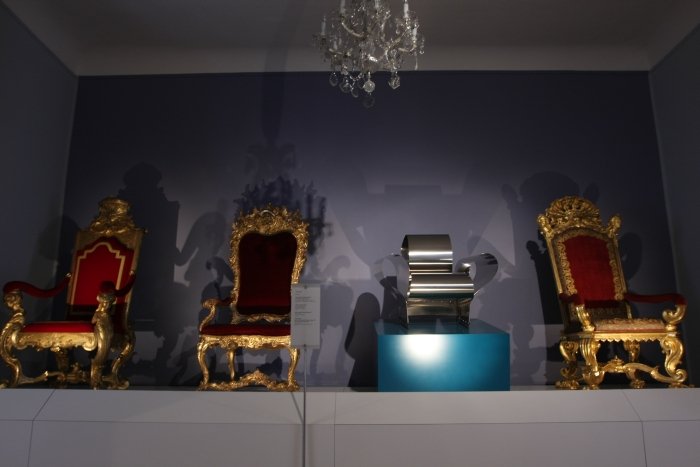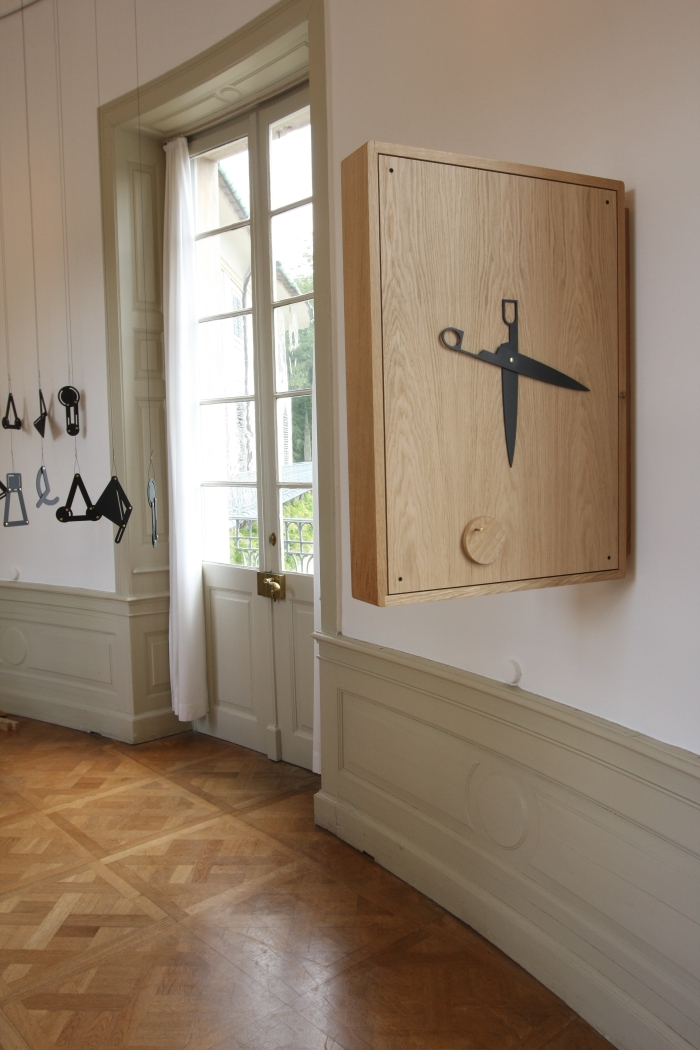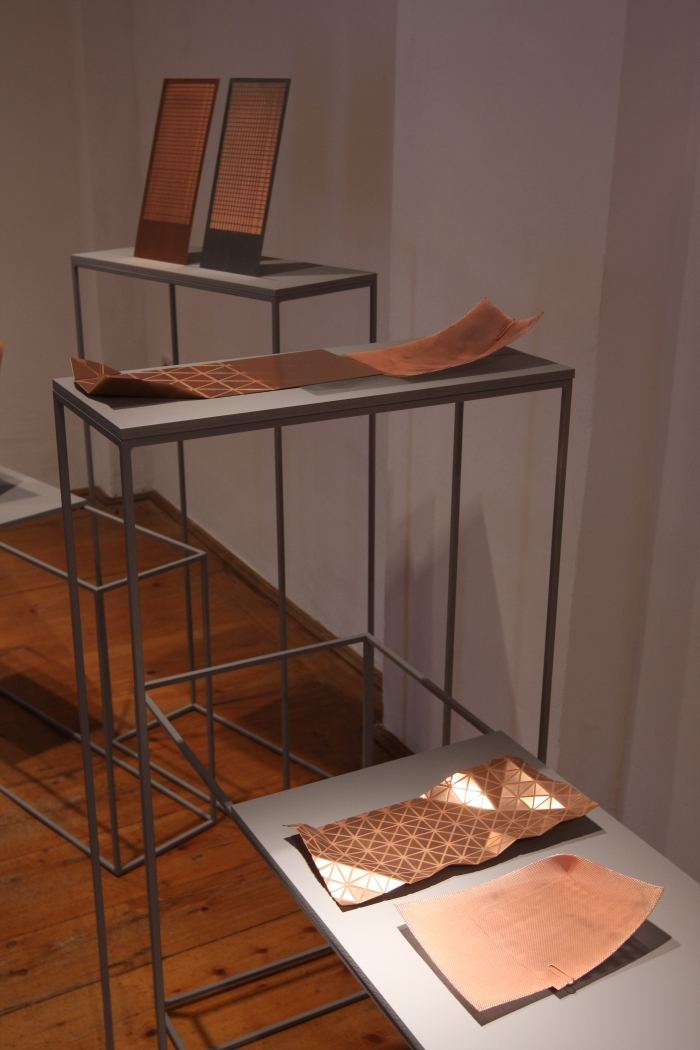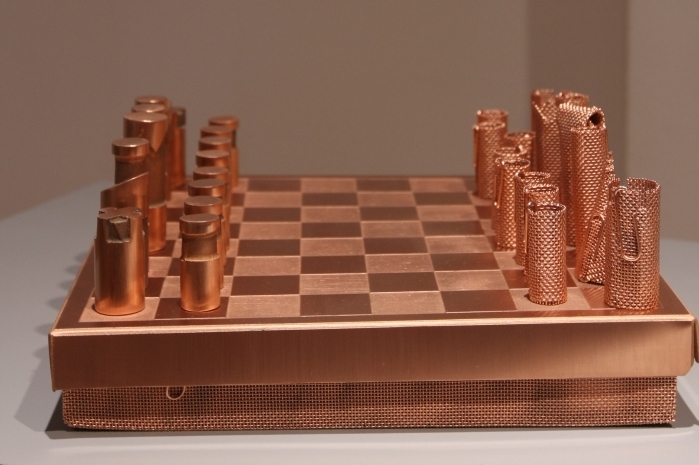Strolling through the corridors of the Dresden Museum of Decorative Arts, the Kunstgewerbemuseum, one comes across a presentation called "Thronfolge" - Throne Succession - featuring three 18th century thrones which belonged to successive Sachsen Kings. And a Well Tempered Chair by Ron Arad.
A delightful piece of juxtaposition made all the more enjoyable on account of the relative ease with which Arad's uncouth bent steel scoundrel fits in with the gilded and velvet noble decadence of yore.
In addition, viewing Throne Succession makes it very clear that, formally speaking, in terms of chair design we've not moved on all that far since the 18th century.
The placing of the Well Tempered Chair amongst the thrones pre-dates Tulga Beyerle's appointment as director of the Kunstgewerbemuseum, and was a decision largely made to fill a gap while a fourth throne was undergoing necessary restoration; however, regardless of its provenance, as a display concept it fits perfectly with the idea behind the museum's new exhibition "Trading Places. Designers meet the collection" which opens to the public today.

"When I began here in January I was very aware that changing the permanent presentation wasn't going to be a quick process, it was going to take time", explains Tulga Beyerle, "and so I decided to use this period of transition to ask designers to work with the collection and to make small injections into the permanent presentation with the aim of helping present the collection in a slightly different light"
To this end five young European design studios were invited to explore the museum's collection, archives, cellars and storerooms and subsequently develop a project based on an object of their choosing and/or their impression, their interpretation, of the museum and its collection.
The results are as varied as the design studios chosen.
The project with the most direct relationship to the collection is probably "Fragrance of Fragments" by Prague based Dechem Studio a.k.a. Michaela Tomišková and Jakub Janďourek. For Michaela and Jakub the overriding impression from the visit to the Kunstgewerbemuseum storerooms was the number, array and variety of fragments of items to be found. And the smell. Or better put the combination of smells. That unique aroma that hangs in the air of any closed storage space and which in a museum represents not only the geography and history of the location but also the inevitable decay which befalls and accompanies any collection. And which are aspects of its collection that museums are, understandably, normally not overly keen to publicly express. Dechem Studio however have transformed them into a sensitive, multi-sensory presentation which brings the hidden world of the museum's storerooms to life through movement, texture, colour, but above all, aroma.
In a similar vein Eindhoven based duo Daphna Laurens have taken the "wow" moment they experienced of seeing what they assumed to be a letter opener transform before their disbelieving eyes into a pair of scissors to create an installation which seeks to capture both the childlike joy of discovery and the meditative effects of watching shapes change and evolve. Interacting with Daphna Laurens' installation helping, if not encouraging and demanding, visitors to think more abstractly. Or at least freer. Unrestricted by convention.

The other three studios have all taken on aspects related to the Kunstgewerbemuseum's textile collection.
Judith Seng has transformed the intricate and slightly hypnotic process of lace making - a handicraft that is perhaps more at home in Sachsen than any where else in Germany - into a dance performance, while London based studio Loris & Livia chose to focus on the rear side of historic textiles; not only a part of a textile that is rarely seen but a part which, on account of the way textiles are used and stored, ages differently, slower, than the front side, meaning the unseen rear side preserves more of the original colour and flair of the piece than the more familiar front side. For "Trading Places" Loris & Livia have developed a special display system that allows the textiles to be viewed and enjoyed from both sides without subjecting the historic material to undue stress.
Textile deterioration and lace meanwhile neatly combine in the project from Vienna based mischer'traxler. Or at least did initially. Katharina Mischer and Thomas Traxler were inspired by the almost photogram-esque process that results when lace samples are presented in museums. Traditionally lace is displayed on textile covered presentation boards, over the decades as the textile invariably fades in the light a negative of the lace sample is created under it. Just in the original colour(s) of the material rather than the black we know from photography. Taking this as their starting point mischer'traxler explored another naturally occurring interdependency, namely electroplating and specifically controlling copper plating to create interdependent "positives" and negatives". In the course of their research they experimented, for example, with creating patterns in copper or of generating a functionality through the plating process. In Dresden they are presenting various stages and aspects of their research: and the chess set they created as a culmination of the work.

We visited Trading Places a little earlier than is optimal and at that time the majority of the exhibits were still being set up and so we could only get a vague feeling for the final effect of the complete show.
What did however impress us was the fact that the projects are presented inter-mixed with and amongst the existing exhibits. Walking through the museum you walk past historical musical instruments, baroque furniture, mischer'traxler copper plating, Chinese vases.
And it all makes perfect sense.
Consequently, and just as with the Ron Arad Throne, Trading Places wonderfully demonstrates that there is a place for contemporary design, contemporary approaches to design, contemporary positions on design and a contemporary view in a museum whose focus is the traditional, the historical, the preservation of a long forgotten society. Exactly because when all is said and done we've not really moved on that far in terms of form, material and functionality. We've just moved perspective. Our understanding of the world around us has changed and so with it the way we view things, the way we approach things, the way we consume and communicate. Museums must evolve to match our increased vocabularies and increased sophistication. That doesn't mean giving up what they are, just ensuring they don't become what they always were.
Over the coming years Tulga Beyerle plans to re-design the permanent exhibition in Dresden. Trading Placesoffers not only a brief glimpse of how the museum could, possibly, potentially, look in the future, but also paves the way for the coming changes. As such an appropriate completion of the exhibition title could be "Trading Places. Designers meet the collection. Visitors meet the future museum."
As we've said before, its going to be a fun journey in Dresden.
Trading Places. Designers meet the collection runs at the Kunstgewerbemuseum, Schloss Pillnitz, Dresden until Sunday November 2nd 2014
Full details can be found at www.skd.museum
